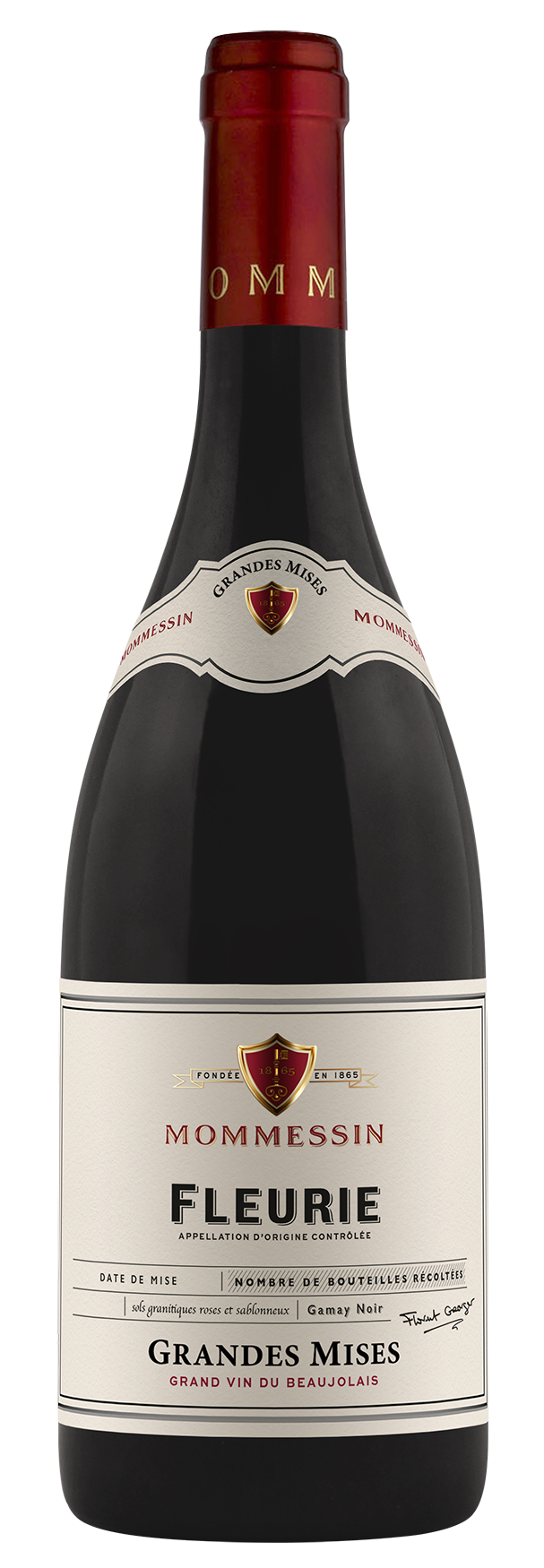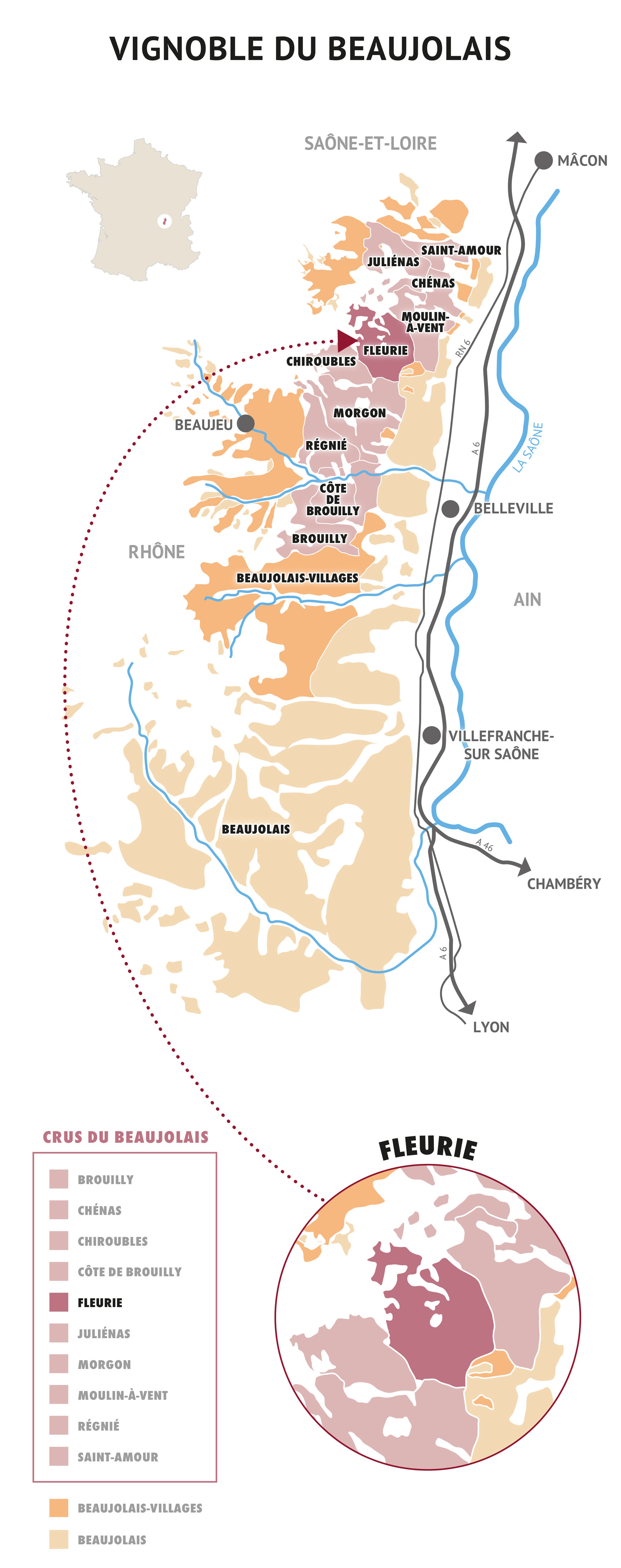Grape varietal
100% Gamay Noir.
Tasting notes
The nose is refined, fresh and mineral, with notes of peony and wild strawberries.
On the palate, the wine is elegant, balanced and complex, refined and spicy with beautiful aromas of black fruits. The tannins are silky and the generous structure offers good length.
Serving suggestions
Enjoy this wine slightly below room temperature, between 15 and 18°C. (59-64°F.).
Try carafing this Fleurie to discover all of its richness!
Food and wine pairing
Be daring when pairing this wine with food. It is the perfect accompaniment for fine food as well as traditional regional dishes.
Ageing potential
Fleurie benefits from spending a few years in the cellar without any problem, and up to 8 or 10 if the correct temperature and humidity levels are respected.
Origins
There is proof that vines have been cultivated in Fleurie since 987. Fleurie has been recognized as an AOC since it was granted its appellation by the INAO on 11 September 1936.
This wine takes its name from the village in which it is produced. Legend has it that Fleurie was named after a Roman soldier, Florus, though there are neither architectural nor written traces of the village having been occupied during Roman times.
Fleurie is often considered to be the most feminine of the Beaujolais Crus. Perhaps this is because of the Madonna of Fleurie who, perched at the top of its hill, protectively overlooks the surrounding countryside and vineyards.
Terroir
Fleurie’s pink granite-based terroir gives the wine its intense carmine red colour, along with fruity and floral aromas of iris, violet and rose. The granite features large crystals and typical pinkish-red colour. In some plots there are numerous layers of micro-granite, but, more importantly, other dark or golden mica-rich lamprophyres.
The vineyard’s lowest point is at an altitude of 210m, though the vines grow as high up the slope as 510m. The average altitude is rather high and the slopes are moderate to very steep in most of the appellation, making it one of the Crus with the steepest slopes.
Vine and soil
Age of the vines: 50 years
Yield: 52 hl / ha
The vines are goblet pruned and cultivated with respect for the environment.
Vinification and maturing
Manual harvest in early September 2023.
Whole bunches are vatted at our partners' premises in order to preserve the Gamay's delicious, easy-drinking character.
Semi-carbonic maceration in vats, with immersion by raking, for 12-15 days, alternating pumping over and devatting to extract maximum substance and structure and fix the aromas of the cuvées. During pressing, the press and free-run juices are blended and racked for malolactic fermentation and ageing on fine lees.
Vintage : 2023
In 2023, the Beaujolais Gamay harvest was marked by contrasting weather conditions. A rainy spring was followed by a hot, dry summer, favouring rapid, even ripening of the grapes. These conditions helped to concentrate sugars and aromas while maintaining good acidity. Yields were slightly below average due to the summer drought, but the quality of the grapes was exceptional.
Harvesting began in early September, with healthy, ripe bunches of grapes. We were able to harvest high quality grapes, despite some losses due to the drought. Overall, the state of the harvest was excellent, with grapes of good colour and thick skins, a sign of optimum ripeness.
The quality of the wines promises to be excellent, with intense aromas of red and black fruit, floral notes and spicy nuances. Initial tasting notes reveal well-balanced, well-structured wines with lively acidity and silky tannins. Their freshness and complexity promise a long life in bottle.
Awards
- November 2025 : 93 points - Editor's Choice - WINE ENTHUSIAST
- October 2024 : 14.5/20 - Bourgogne Aujourd'hui Magazine




